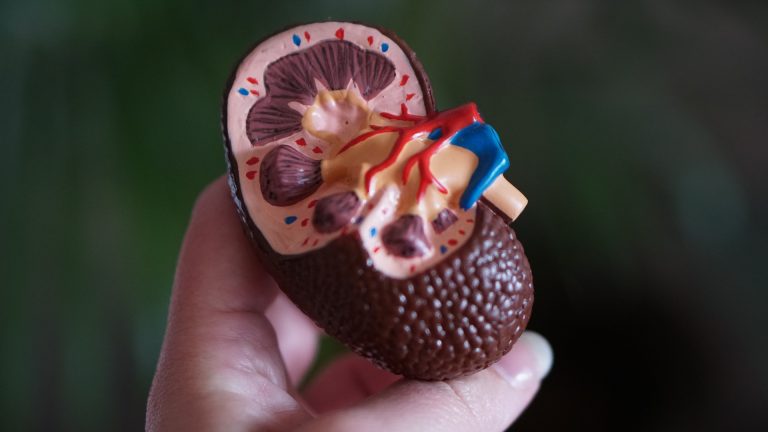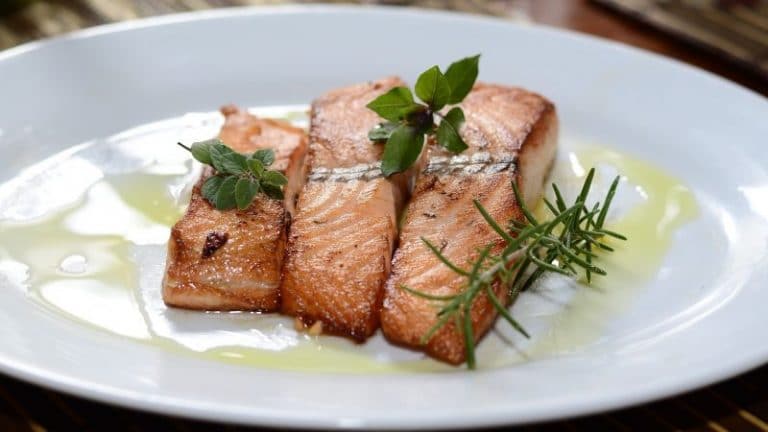What Is FODMAP and How Can a Low FODMAP Diet Help with IBS

How many people do you know who have stomach problems, strange allergies, and random inexplicable symptoms? The most likely culprit is the diet. Or, more specifically—the diet aggravated by a FODMAP intolerance.
Having a FODMAP meal plan means you can significantly improve your quality of life. IBS sufferers can also expect good results. A diet low in FODMAP carbs is an excellent IBS diet as well. Read on to discover what FODMAPs are, why they cause trouble, and get some tips on how to modify your lifestyle with this diet and reap its benefits!
What Does FODMAP Mean?
FODMAP intolerance is an intolerance to a specific subset of foods that fall under the FODMAP category. These are essentially fermentable carbs difficult to digest. Getting rid of this type of carb is a great way to:
- improve your gut health
- minimize irritable bowel syndrome (IBS) symptoms
- improve your general sense of wellbeing
But what does FODMAP stand for exactly? This acronym stands for fermentable oligosaccharides, disaccharides, monosaccharides, and polyols. They are short-chain carbohydrates, molecules found in many of the foods we eat.
Unfortunately, they are often poorly digested. So a diet low in these foods is there to minimize the level of these carbs you ingest. “What are the FODMAPs that we most often ingest?” You are most likely already familiar with them. They are actually part of our everyday nutrition.
Basically, if you want to stick to a low FODMAP diet, avoid the following food categories and types:
- fructose (monosaccharides)
- lactose (disaccharides)
- fructans and galactans (oligosaccharides)
- polyols
Fructose is a simple sugar found in much of the produce we eat. For example, many fruits and vegetables contain fructose. Moreover, table sugar (sadly the most popular food on the FODMAP list) is most often derived from this compound.
You are likely very familiar with lactose. Namely, it’s a carb found in all dairy products, such as:
- cheese
- milk
- yogurt
Essentially, lactose intolerance is a type, or a subset, of FODMAP intolerance. So if you ever felt lactose intolerance symptoms after eating other foods, you might just have an issue with FODMAPs. Sticking to low FODMAP foods can pretty much alleviate most of the symptoms of lactose intolerance you feel.
Fructans are commonly found in:
- spelt
- rye
- barley
- wheat
- most grains
Galactans, on the other hand, are found in legumes, like beans or peas.
Finally, we have polyols. Polyols are sugar-free sweeteners. However, unlike sweeteners such as aspartame, these are not artificial. In fact, you can find them in certain vegetables and fruits, just like fructose. Still, they do cause FODMAP-related symptoms. For example, blackberries have plenty of polyols in them.
Why Do FODMAPs Cause Trouble?
Now, there is a good reason why the foods on the FODMAPs food list cause trouble. Namely, most of them just go right through your system, not being digested or processed. All high FODMAP substances are problematic, but that doesn’t mean they will cause problems for every single person. Some people are more sensitive to certain FODMAPs than others.
For those that experience problems, these carbs, once ingested, reach your colon, and they stay there. Instead of being completely absorbed, they remain inside your guts and start getting digested by the wrong gut bacteria.
When you consider items on the low FODMAP food list, they are fermented by different, healthy gut bacteria. So, you are most likely familiar with the positive effects of these foods and this kind of diet. The bacteria that feed on FODMAPs, however, are a bit more problematic.
Good gut bacteria release methane, while FODMAP-eating bacteria create hydrogen. Hydrogen in our guts causes:
- bloating
- cramps
- constipation
- general gut pain
To make matters worse, FODMAP carbohydrates are osmotically active. In other words, they draw water directly into your intestines, which then also leads to severe diarrhea bouts. The good news here is that a good low FODMAP meal plan will set you straight and mitigate most of the above issues.
Now, bloating, cramps, constipation, diarrhea, all without a clear cause, might sound familiar to you. Well, you just might have irritable bowel syndrome. Luckily for you, low FODMAP diet recipes can help you with that as well.
FODMAP and IBS
Irritable bowel syndrome is a common disorder that affects many people. In fact, in the United States, it affects somewhere between 25 and 45 million people. Furthermore, around 10 to 15% of the global population suffers from some form of IBS or another.
The main problem with IBS is that its specific cause is simply not known. Some claim that it’s caused or exacerbated by high FODMAP foods. One hypothesis claims that IBS is based on a problematic connection between your brain, nervous system, and gut. And while stress does not directly cause IBS, it can trigger it or exacerbate its symptoms.
However, while a specific cure has still not been found, it has been shown that certain modifications to your lifestyle can help alleviate IBS symptoms. This diet might be just the thing you need. But first, you need to figure out if you have IBS or not.
The most common symptoms of IBS are:
- constipation
- diarrhea
- frequent bowel movements
- cramps
- bloating
- gas
Of course, those are just physical symptoms. IBS also carries with it the anxiety and hardship that comes with living with such a condition. However, there is evidence that a proper irritable bowel syndrome diet, a diet that will help alleviate many symptoms of IBS, consists of almost no ingredients rich in FODMAPs.
Due to the myriad of symptoms IBS has, it is difficult to find an effective treatment. Still, while relatively novel, evidence shows that a low FODMAP meal plan has shown some positive results. So, make sure you stick to it.
List of High FODMAP Foods
You won’t have to really throw all of the high FODMAP foods out the window since it’s pretty rare that one single person can’t handle every one of these food items. Still, for your elimination diet (more on that later), you will need to, for a little while, altogether avoid eating most of these foods.
The high FODMAP chart below is far from comprehensive. It does, however, show you the most common foods we eat.
| Legumes and vegetables | Grains, grain products, and nuts | Fruit | Drinks | Other |
| Artichokes | Wheat (and products containing it) | Apples | Beer | Honey |
| Beans (almost any type) | Barely | Apricots | Any juice from the high FODMAP fruits | Pesto pasta |
| Celery | Almond meal | Bananas | Rum | Jam |
| Garlic | Bran cereal | Dates | Fennel, black, chai, herbal, and chamomile teas | Molasses |
| Cassava | Chestnut flour | Figs | Wine | Tzatziki |
| Leek | Rye | Mango | Whey protein | Agave |
| Pickled veggies | Spelt | Nectarines | Coconut milk | Relish |
| Soybeans | Pistachios | Peaches | Kombucha | Stock cubes |
| Shallots | Gnocchi | Pears | Quinoa milk | Caviar dip |
| Mushrooms | Pasta wheat | Prunes | Soy milk | Fruit bars |
| Beetroot | Cashews | Raisins | Most sports drinks | Hummus |
The above high FODMAP diet chart does not include dairy products because of the simple fact that they are pretty much universally banned from your diet (with a couple of exceptions). It would help if you also kept an eye on any pastries, cakes, and desserts that contain some of the ingredients above. Furthermore, sausages and generally processed meats might have things like flour and garlic in them. Garlic is actually a powerful and common trigger for FODMAP issues.
List of Low FODMAP Meals
Below are common ingredients and foods found in most supermarkets that are not, nor do they contain, FODMAPs. Just like how the above high FODMAP food list is not comprehensive, neither is this list of foods that are completely fine.
| Legumes and vegetables | Grains, grain products, and nuts | Fruit | Drinks | Other |
| Alfalfa | Cornbread | Breadfruit | Kvass | Almond, rice, and hemp milk |
| Bean sprouts | Brazil nuts | Grapes | Spirits | Most oils |
| Carrots | Buckwheat | Kiwi | Green, peppermint, white tea | Most herbs |
| Collard greens | Chestnuts | Oranges | Coffee (no sugar or milk) | Most spices |
| Cucumber | Oats | Passion fruit | Low quantities of soft drinks | Lard |
| Eggplant | Peanuts | Strawberry | Fruit juice made from low FODMAP fruits | Peanut butter |
| Fennel | Polenta | Papaya | Water | Vegemite |
| Kale | Corncakes | Guava | Oyster sauce | |
| Green beans | Rice (and rice cakes, crackers, flakes…) | Clementine | Fish sauce | |
| Peppers | Chia, poppy, pumpkin… seeds | Pineapple | Mayonnaise | |
| Ginger | Walnuts | Limes and lemons | Dark chocolate |
Meat (seafood, fish, game, poultry, beef, pork…) is not on the list because it’s pretty much completely FODMAP friendly (on account of lacking any carbohydrates). So, unless it has been mixed and processed with something, you should be in the clear. Furthermore, there is low FODMAP bread, too. In fact, wheat and gluten-free bread are acceptable (and avoiding gluten has many added benefits).
There is a low FODMAP meal plan vegetarian people can enjoy, so if you are a vegetarian and want to stick to this diet, don’t worry, you definitely can. Moreover, you might also find that certain cheeses are easier to tolerate. For example, Brie, feta, and mozzarella are much easier when it comes to your gut. The same goes for lactose-free yogurt, as well as Greek yogurt in small amounts.
And if you don’t want to think about what to eat next, follow the 30–day low FODMAP meal plan. That way, you can simply stick to it without making the diet plan yourself. And you can also use the FODMAP meal plan delivery. That’s for people who are frustrated with all the recipes and shopping lists.
So, eating fruits low in FODMAPs, sticking to low FODMAP vegetables will definitely help, but the benefits are not immediate. We advise that you stick to a strong elimination diet, a particular and concrete system most often used to implement this diet.
The FODMAP Elimination Diet
We still haven’t properly answered something. What is a low FODMAP diet? How can you put it into practice? Well, the best way is through the elimination and reintroduction of foods with high FODMAP content. It is complicated to determine exactly which foods are causing us trouble. There are very few people who are allergic to all of the above FODMAP foods. This is why the three stages are used:
- elimination
- reintroduction
- personalization
Namely, the FODMAP diet explained simply is to throw out as many foods high in FODMAPs as you can. However, there is truly a method to this madness. You have probably noticed that these are basically most of the foods we eat. This is where the above three stages of the elimination diet come in, as well as the preparatory stage.
During this preparatory stage of the FODMAP elimination diet meal plans, you need to write down your most common symptoms. Write down:
- How does it feel when you have these problems?
- What are your exact issues?
- Do you feel them the most in the mornings or evenings?
- Are there times where you don’t feel symptoms at all? Maybe after breakfast, or perhaps before you go to bed?
Be diligent; you will need this for later.
1. Elimination
Elimination is the first stage. Here, you completely eliminate everything that is not a part of the FODMAP diet plan. This is extreme, and rightfully so. It isn’t easy to maintain a balanced diet in this manner. Ingredients become sparse; you severely limit the choice of foods you have at your disposal. This can cause problems in that you have a pretty boring selection of foods in front of you and have difficulty getting all the nutrients and vitamins inside of you.
Now, you will stick to this kind of extremely low FODMAP diet meal plan only for two to four weeks. Keep track of what you eat, and keep an eye on your symptoms. If you followed it correctly and genuinely eliminated all FODMAP foods, you should notice your symptoms receding by a noticeable degree. We suggest you take some vitamin and calcium supplements during this phase, just in case.
2. Reintroduction
Next comes reintroduction. Here you will slowly reintroduce certain foods. This is a vital part of the low FODMAP diet plan. Start with a couple of them at a time, and see how you react. Stick to only one group and see how it goes. This process can take a while—maybe a week, maybe two for each food group.
3. Personalization
This is where this diet becomes part of your everyday life. You should memorize and eliminate your most common triggers and problematic foods. Keep them all in mind; keep a list. If needed, have this as an extension of the reintroduction phase. There might still be some foods that, while not triggering severe symptoms, could still cause discomfort.
Low FODMAP Diet Recipes
And they are both healthy and tasty.
As you have probably noticed, the low FODMAP diet for IBS, or whatever gastrointestinal issue you have, is somewhat restrictive. That doesn’t mean, however, that you will have to starve yourself. There are actually some great low FODMAP recipes out there, some of which we have taken the liberty of presenting below.
Quinoa and Feta Salad
A delicious and healthy salad, a perfect light meal if you want to keep your energy levels high while still feeling light and alert. Serves two people. You will need:
- three cups of quinoa
- a cup of feta cheese
- half a lemon
- a tablespoon of olive oil
- half a teaspoon of coriander
- half a teaspoon of turmeric
- half a teaspoon of cumin
The first entry on our short list of low FODMAP diet recipes is pretty simple and pretty delicious. Get a big pan and heat the oil (stick to medium-high heat). Then, throw in the spices for a couple of seconds first to release some of their fragrance and taste. Throw in the rinsed quinoa, let it fry for a couple of minutes until you hear it pop. Add around two and a half cups of boiling water, and keep it all simmering for a couple of minutes.
Once the water has mostly evaporated, remove it from the stove, and let it cool. Then, once it’s relatively cold, add the feta cheese (crumble it up). And if you’re still a bit hungry after this light meal, we suggest you get some peanuts as low FODMAP snacks. Dried pineapple, raisins, and baby carrots are great as well and will be more than enough to tide you over until dinner.
High Protein Salmon and Spinach Lunch
A very high protein lunch, packed with iron, amazing nutrients like B5, and omega-3 fatty acids. A delicious and healthy lunch for two people. You will need:
- a teaspoon of vegetable or olive oil
- three salmon fillets (skinless)
- a cup of spinach
- lemon juice (one large squeezed lemon)
- three tablespoons of parsley
- salt and pepper to taste
- a garlic clove, minced
This is one of the many amazing low FODMAP dinner recipes. Roll the salmon into the pepper and salt, and put it in an already hot, oiled pan for four minutes. The meat is done when the seared sides are golden and when it falls apart easily.
As far as the spinach is concerned, put entire leaves within the hot pan, add all the seasoning and finely minced garlic, and keep the pan covered for around two minutes. Let the steam do its work, and you should be done.
Baked Potatoes and Eggs
Probably the simplest meal on the list, this is the perfect low FODMAP breakfast for busy people on the go. It can serve two to three people. You will need:
- three tablespoons of olive oil
- three eggs
- three tomatoes
- a zucchini
- three large potatoes
- pepper, paprika, garlic powder to taste
This FODMAP diet meal plan for breakfast is simple. All you have to do is heat up the oven to high, with the fan on. Then, cut the potatoes and tomatoes into halves or smaller pieces. Get the zucchini into one-inch slices. Put roasting paper into the pan, and put the potatoes in. Drizzle with olive oil, sprinkle all of the spices and keep them roasting for 25 minutes.
Then, put the zucchini, tomatoes, and eggs in. Make some room for the eggs, crack them, and come back to the entire thing after 5 to 10 minutes, and there’s your answer to “What can I eat for breakfast on a Fodmap diet?”
Since it eliminates a lot of foods, you can lose some weight during this diet. That’s why some people may also use the FODMAP diet plan to lose weight. However, it’s important to know that the diet isn’t meant for weight loss.
FODMAP Meal Plan During the Pandemic
Eating healthy is always important, especially during the pandemic. It’s vital that you understand the risk of becoming malnourished since it can increase your chances of severe COVID-19 and complications. The things we eat and drink affect our body’s capacity to prevent, fight and recover from infections.
Even though there aren’t any foods that can prevent or cure this virus, healthy diets are essential for supporting the immune system and reducing the chance of developing:
- heart disease
- obesity
- diabetes
- some cancer types
During these times, make sure you practice good hygiene when handling the foods from your FODMAPS diet meal plan. Here are some tips for it:
- Keep the food clean.
- Keep it at safe temperatures.
- Cook thoroughly.
- Separate raw and cooked.
- Use safe water and raw materials.
Conclusion
FODMAPs are everywhere; they represent core parts of our diets. The article above should have hopefully explained what FODMAP is, what this acronym stands for, and how the FODMAP diet can help you with various digestive and gastrointestinal issues.
Today, many people suffer from IBS and feel its debilitating symptoms, and this kind of diet can help them find relief. Navigating this type of nutritional landscape can be difficult, which is why the three stages of the FODMAP elimination diet are so helpful. The key to success here is being thorough and sticking to the program.
FAQs
What is a low FODMAP diet?
It is a diet low in FODMAP—specific sugars which may cause intestinal distress. The diet is designed for helping people with irritable bowel syndrome (IBS) and/or small intestinal bacterial overgrowth—SIBO to find out which foods cause them problems and which ones reduce symptoms.
What can I eat for lunch on the FODMAP diet?
Even though your options are somewhat limited, there’s still plenty of foods you can enjoy. We suggest you try:
- salad nachos
- warm bacon and avocado salad
- summer garden vegetable soup
- Thai-inspired chicken coconut broth
- Singapore chicken satay
What are FODMAPS foods?
FODMAP foods are those containing specific types of carbohydrates. In addition, they include sugars, causing symptoms in the digestive systems of susceptible people. So, studies have shown that a low FODMAP diet helps improve IBS symptoms.
What can you eat on a low FODMAP day?
So, If you consider starting a low FODMAP diet, you should know which ones are low FODMAP foods. Low FODMAP meals include:
- grains such as rice, oats, and quinoa
- eggs and meat
- oranges, strawberries, pineapple, blueberries, and grapes, part of the FODMAP fruits
- specific cheese like Brie, Camembert, feta, and cheddar
- almond milk
- vegetables such as tomatoes, zucchini, potatoes, cucumbers, and eggplant
Can I eat peanut butter on a FODMAP diet?
Yes, you can. In fact, in the US, peanut butter is considered low FODMAP if taken in two tablespoons or 32 grams. So, if you are on a FODMAP meal plan, make sure you check the labels and avoid products that contain higher FODMAP ingredients like high fructose corn syrup or molasses.






